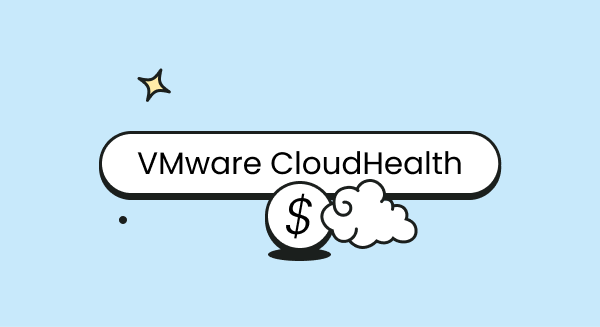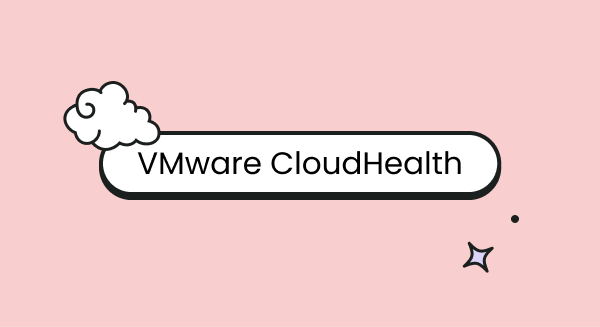
The cloud continues to grow in popularity. Top providers like Amazon Web Services (AWS), Google, and Microsoft Azure offer competitive prices to attract enterprises. As organizations move their workloads to the cloud, their primary concern is cost overruns. More and more companies are now focusing on cloud cost management and optimization.
Cloud cost management ensures that cloud expenses are controlled by implementing an efficient architecture. Achieving robust cost management requires an in-depth understanding of all cloud expenses and removing unnecessary ones. This means managing memory, storage, instances, and network traffic.
This article will present the 5 key challenges involved in cloud cost management.
1. Low Visibility Into Cloud Spend
Minimal visibility into cloud spending is the main challenge to cloud cost management. Most companies don't have the right tools in place to determine where cloud resources are being used. This means there may be many hidden cloud costs the company may not be aware of.
Most users in many companies also don't understand how their activities impact cloud costs. They may roll out cloud resources carelessly, creating underutilized or unused architecture. Ensuring comprehensive visibility over cloud usage and associated costs is the first essential step in optimizing cloud costs. Companies that adopt cloud management platforms significantly improve their visibility – especially across multi-cloud environments.
2. Oversizing
Oversizing is the number one cause of high cloud costs. It is not uncommon for nearly 40% of all instances to be over provisioned, i.e., bigger than they need to be for their workloads. As businesses shift from onsite servers to the cloud, they place priority on the performance of their apps compared to cost. Migrating to the cloud with overpowered EC2s will certainly provide better performance, but it will be very expensive.
The best way to optimize cloud costs is to rightsize AWS resources. Rightsizing is the process of downsizing instances without compromising the performance of applications. To find idle instances, businesses should measure the performance of instances against usage requirements. Poorly matched instances can then be rightsized.
Resources in the cloud environment need to change from time to time. Rightsizing to achieve cost optimization is, therefore, a continuous process. To promote cloud cost management, companies need to establish rightsizing schedules for different departments. Supporting such efforts means enforcing instance tagging policies and using AWS monitoring tools to inspect and analyze the usage of resources and instances.
3. Erroneous Budget Forecasts
Because anyone can roll out cloud resources, companies often initiate numerous, unpredictable cloud resources. Inaccurate budget forecasts can have severe consequences for a business. For example, if an application is under budget compared to its cloud cost thresholds, that application can stop running. Overbudget applications result in a company paying for resources they aren't using.
Accurate financial forecasting is important to businesses as this helps them determine their financial needs. Businesses can adopt cloud cost management tools to accurately forecast their budget. Cloud cost management tools allow businesses to run alternative scenarios and improve their estimates of future cloud needs. These tools can also use historical data to provide trends for future forecasting.
4. Billing Complexity
In traditional companies, billing of any type was left to finance teams only. This does not work with a micro architecture or distributed architecture setup – where cloud bills are complex. The finance teams often lack the necessary information to break down the different components of the cloud bill.
Cloud service providers have also not made the billing processes any simpler. Cloud billing and charging processes change constantly.
Companies should ensure that all the teams building workloads in the cloud understand the cost implication of their decisions on the business. Unlike in the past, when development teams focused on the efficiency of their applications, today, they also need to understand cloud cost management.
Current estimates suggest that 30% of cloud spending by companies is wasted. It doesn’t have to be this way. AWS features like autoscaling, cloud vendors' containers, and serverless services can save companies money. For example, AWS autoscaling is a simple way for companies to optimize their cloud costs. AWS autoscaling helps companies automatically adjust their capacity depending on demand. There are some applications, however, that cannot autoscale, such as caches.
5. Poor Application Architecture Design
Inexperienced developers do not always understand the cost implications of selecting different features for their applications. For example, a query for a widget that is installed in a web app could cost thousands of dollars. This lack of experience, besides leading to the development of sub-par applications, also affects cloud cost management.
When developers choose sub-optimal architecture for their workloads, they often experience high cloud costs. This is a common issue when companies are in a rush to shift to the cloud. The first step to choosing an ideal architecture is to measure the workload. An appropriate architecture is then adopted to serve this workload. The different dimensions to look at when modeling a workload include:
- Processor service time
- Read vs. write workload
- Disk storage demand
- Memory service demand
- Transaction size
AWS’ Well-Architected Framework was released with the aim of helping developers to build reliable, scalable, and secure applications. Without this framework, most apps would be susceptible to hacking attacks and crashing.
There are different factors that have led to the failure of companies to optimize cloud spending. The major one is the absence of cloud cost control strategies. High cloud costs are worsened by a lack of visibility over cloud spend. Employees in most companies don't understand the importance of cloud cost management to the businesses' goals. Even members of the IT departments may fail to understand how poor design methods can negatively impact cloud costs. Having a FinOps team can help companies understand their cloud bills and find areas where cloud resources are wasted. A FinOps team will help point out oversized instances, break down complex bills, and identify poor practices by IT teams that may impact cloud costs.
If you are facing cloud cost control challenges, perhaps you will benefit from better tooling to provide better visibility over cloud costs and more accurate forecasting strategies? Finout provides a no-code cost abstraction to simplify your cloud cost management. From virtual tags to a coherent Unit of Economics: Finout assists FinOps teams to grasp back cost control and mitigate your AWS cost control challenges. Join the cloud cost control revolution today by signing up for our free trial.









